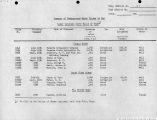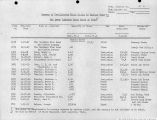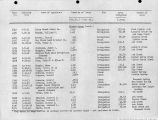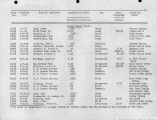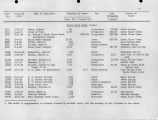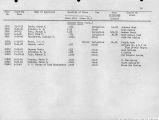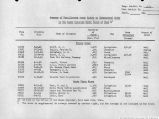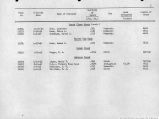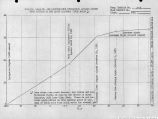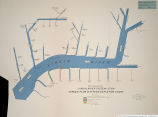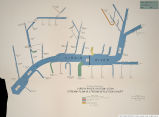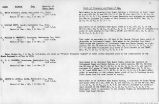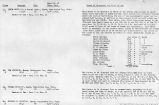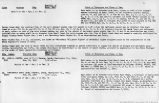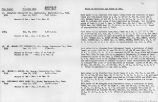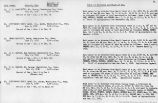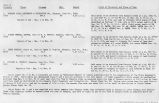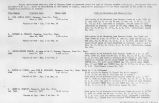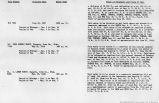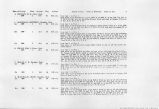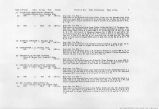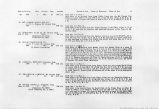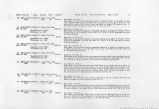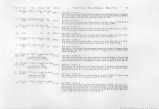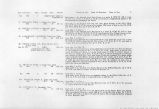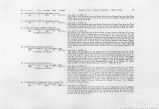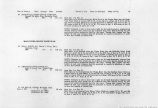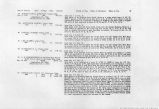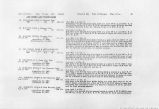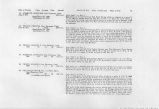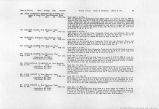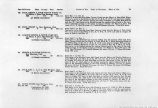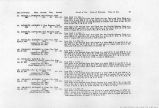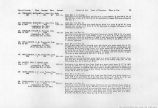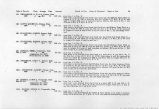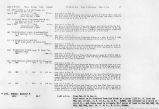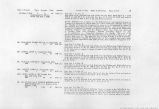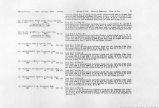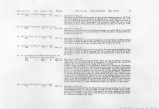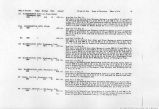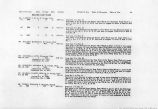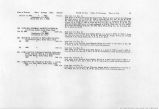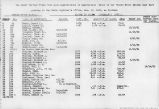| OCR Text |
Show 234 IRRIGATION INVESTIGATIONS IN UTAH. It is recognized that a single series of measurements is not conclusive, hut these summaries show that the How of the river was not appreciably affected by the diversions being made on June 21 and June 23. With diversions at Virgin City amounting to 1H.81 cubic feet per second, there was but 3.87 cubic feet per second less water flowing away from the settlement than was flowing to it. showing that (.'.!<4 cubic feet per second of the 13.SI cubic feet per second diverted returned to the river before the settlement was passed. With diversions at Kockville amounting to 15.08 cubic feet per second, there was 1.42 cubic feet per second more water leaving Rockville than was flowing to it, showing that while only 15.OS cubic feet per second was diverted; the gain by return seepage was KS.50 cubic feet per second. This is explained by the fact that larger diversions than those made on the days of measurement are usual and had been made a few days prior to the date of the gauging* ishown in the tables. The largest ditch at Kockville-the Rockville Town Ditch, with a capacity of 10.82 cubic feet per second-and the largest ditch at Graf ton-the Grafton Lower Ditch, with a capacity of 14.15 cubic feet per second-were empty on the da}' the gaugings were made. When a move is made to settle water titles on Virgin River, besides determining to what extent Hurricane, La Verkin, St. George and Washington, and other canals and ditches are independent of those above, the respective rights of the irrigators in each section will have to be considered. To determine the area irrigated and the requirements of the land in the upper settlements, and the dates of u*e. would be a comparatively simple task, but to reach a just conclusion as to the division of water between Hurricane, La Verkin, and St. George and Washington canals would be more difficult. While the St. George and Washington Canal has been using water more systematically than La Verkin Canal, certain conditions have been met under La Verkin Canal that affect its standing. Chief of these have been the difficulties in ditch maintenance mentioned in connection with this canal earlier in this report. The question of whether reasonable diligence has been exercised by the builders of this canal would have to be considered. In determining the rights of Hurricane Canal, the question of priority would not arise, but only that of how far wasteful use elsewhere on the stream should be allowed to the injury of Hurricane Canal. The fact of wasteful use in St. George and Washington Field is clear. It should be the dut}r. of some official, presumably the county water commissioner, to see that the wasteful use is stopped. While other fields are suffering as the Hurricane Field will when the canal is completed, no irrigator should be allowed water in excess of his needs. After the Hurricane Canal is completed and a definite basis of dividing the water of Virgin River is established, the work of division would be greatly facilitated by a knowledge of the flow of Virgin River above Hurricane ('anal. If the division is to be entirely satisfactory, this knowledge will be essential, because it is impossible to divide accurately a stream whose volume is not known. In the box canyon directly above the Hurricane Dam is a desirable section of the river for keeping such a record. An automatic register at that point would keep the record in a satisfactory and comparatively inexpensive manner, and it is to he hoped that either the owners of the different canals or the county of Washington, through the water commissioner of water district No. 1, will see their way clear to install it. |
| Source |
Original book: Utah exhibits [of the] State of Arizona, complainant, v. State of California, Palo Verde Irrigation District, Imperial Irrigation District, Coachella Valley County Water District, the Metropolitan Water District of Southern California, City of Los Angeles, City of San Diego, and County of San Diego, defendants, United States of America and State of Nevada, interveners, State of New Mexico and State of Utah, parties |
















































































































